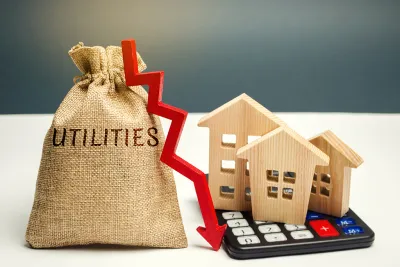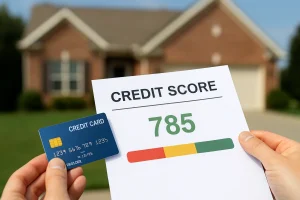Reducing energy consumption at home is an effective way to lower expenses and support environmental preservation. Homeowners can implement energy-saving strategies that improve sustainability, enhance comfort, and boost efficiency without requiring significant effort or investment.
Anúncios
By adopting measures such as using energy-efficient appliances, optimizing heating and cooling systems, and utilizing natural resources, you can significantly reduce energy usage while maintaining comfort. Small adjustments or major upgrades can lead to noticeable savings and a more sustainable living environment.
Embrace efficient appliances

Upgrading to energy-efficient appliances is a powerful way to cut energy bills. Modern appliances, especially those with the ENERGY STAR label, use advanced technologies to deliver superior performance while consuming less power, leading to noticeable savings.
The kitchen is an ideal starting point, with energy-efficient refrigerators, ovens, and dishwashers offering substantial reductions in utility costs. Upgrading washers and dryers also contributes to savings, and many energy providers offer rebates for these purchases, making the transition even more cost-effective.
Don’t forget smaller upgrades, like replacing traditional bulbs with LEDs, which use up to 80% less energy and last longer. Smart power strips and chargers also help by shutting off power to unused devices, preventing energy waste. Together, these changes lead to significant long-term savings.
Optimize your heating and cooling systems
Efficient heating and cooling management can significantly reduce energy use, as these systems account for much of a home’s energy consumption. Regularly replacing HVAC filters ensures smooth operation and enhances efficiency, while professional maintenance checks keep the system in optimal condition.
Installing a programmable thermostat allows precise temperature control based on your schedule. Lowering the heat in winter or raising it in summer when you’re away conserves energy without sacrificing comfort. Smart thermostats add convenience by learning your habits and adjusting settings automatically.
Sealing leaks in windows and doors with weatherstripping prevents air loss, maintaining a stable indoor climate and reducing strain on your system. These simple steps improve comfort while cutting energy costs.
Harness natural resources
Utilizing natural resources can significantly lower energy use and utility costs. Take advantage of sunlight during the day to brighten and warm your home by keeping blinds open and arranging furniture to maximize natural light. This reduces dependence on artificial lighting and heating.
Applying passive solar heating principles, such as adjusting your home’s design or planting deciduous trees for seasonal shade and sunlight, can further conserve energy. For a long-term solution, consider installing solar panels. While the upfront cost is substantial, incentives and tax credits make them more accessible, and they can drastically reduce or eliminate electricity bills over time.
Implement smart control strategies
Smart technologies provide powerful tools for managing home energy consumption efficiently. Home automation advancements give homeowners real-time control over energy use, enabling optimized consumption for maximum savings.
A great starting point is a smart home hub, which connects devices like thermostats and lights for centralized, automated control. This allows for settings such as lights turning off when rooms are unoccupied or temperature adjustments based on occupancy, all managed through connected devices.
Smart appliances further enhance efficiency, with features like sensors and connectivity that enable operation during off-peak hours or lower energy cost periods. These innovations help reduce utility bills while maintaining performance and convenience.
Behavioral changes for energy conservation
Sometimes, the simplest changes can have the most profound impact on reducing energy usage. Promoting energy efficiency in everyday habits leads to both financial savings and environmental benefits. Small actions, such as turning off lights when leaving a room or unplugging devices not in use, accumulate over time.
Encourage family members to be mindful of their energy consumption. For example, use cold water for laundry whenever possible, as heating water consumes a significant amount of energy. Air drying clothes and dishes instead of utilizing dryers can also contribute to savings on electricity.
Cooking habits can influence energy bills, too. Use the microwave or toaster oven for smaller meals, as these appliances use less energy compared to a conventional oven. Double up by cooking more substantial meals and reheating portions later. Cultivating awareness and mindfulness as part of your routine can have lasting effects on reducing energy bills and fostering a sustainable lifestyle.
Engage in regular energy audits
Conducting routine energy audits can offer valuable insights into potential areas for improvement within your home. Whether you hire a professional or perform a basic evaluation yourself, energy audits help pinpoint where excess energy is being consumed and guide your efforts for maximizing efficiency.
Start with a simple visual check—look for draughty areas and inadequate insulation. Examine appliances and devices for their energy ratings and age, as this often indicates potential savings opportunities. Identifying high-use areas gives you a focused target for improvement.
Many utility companies provide free or subsidized energy audits, which can offer more detailed assessments and recommendations. Additionally, energy-saving tips and tools from these providers will aid in setting up an action plan. By understanding your consumption patterns, you can take well-directed steps that create a long-term impact on your energy bills and increase your home’s energy efficiency.






